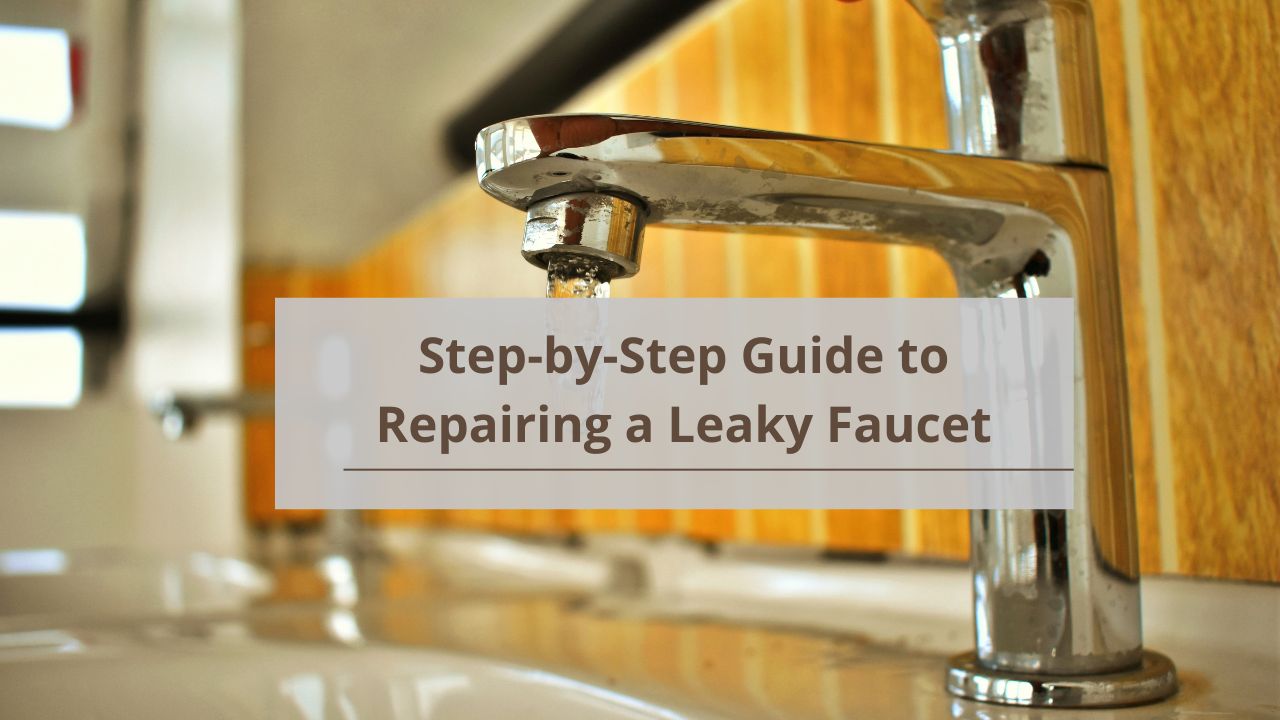A leaky faucet might seem like a minor inconvenience, but it can lead to higher water bills and potential water damage if left unchecked. Understanding how to repair a leaky faucet not only saves you money but also helps maintain your home’s plumbing system. In this step-by-step guide, we’ll walk you through the process of fixing a leaky faucet, no matter the type you have.
Tools and Materials Needed
Before you start your repair, gather the necessary tools and materials.
Basic Tools
- Adjustable Wrench: For loosening and tightening faucet components.
- Screwdrivers (Flathead and Phillips): To remove screws and handles.
- Pliers: For gripping small parts and fittings.
- Allen Wrenches: Needed for some faucet models.
- Bucket: To catch any residual water during the repair.
Materials
- Replacement Parts: Depending on your faucet type (cartridges, O-rings, washers).
- Plumbing Tape: To seal threaded connections.
- Lubricants: To ensure smooth operation of moving parts.
Safety Gear
- Gloves: Protect your hands from sharp edges and water.
- Safety Glasses: Guard your eyes from splashes and debris.
Preparation Steps
Proper preparation is key to a successful repair.
Turn Off the Water Supply
- Action: Locate the shutoff valves under the sink and turn them off. If there are no valves, turn off the main water supply.
- Tip: Test the faucet to ensure no water is coming out before proceeding.
Drain the Faucet
- Action: Open the faucet to drain any remaining water in the system.
- Tip: Use a towel or bucket to catch any residual water that may spill out.
Gather Tools and Materials
- Action: Organize your tools and materials for easy access during the repair.
- Tip: Make sure you have everything you need to avoid interruptions.
Identifying the Type of Faucet
Knowing the type of faucet you have will guide you in the repair process.
Compression Faucets
- Description: Features separate handles for hot and cold water with a compression valve.
- Identification: Typically has a traditional look with separate handles.
Ball Faucets
- Description: Uses a single handle and a ball-type mechanism to control water flow.
- Identification: Often found in modern designs with a single lever.
Cartridge Faucets
- Description: Operates with a cartridge inside the faucet body, which controls the water flow.
- Identification: Usually has a single lever or two handles.
Ceramic Disk Faucets
- Description: Utilizes a ceramic disk to regulate water flow and temperature.
- Identification: Known for its smooth operation and typically features a single handle.
Repairing a Compression Faucet
Follow these steps to repair a compression faucet.
Disassemble the Faucet
- Action: Remove the handle and any decorative parts. Use a screwdriver to access the valve.
- Tip: Keep track of all parts and screws for reassembly.
Inspect and Replace Components
- Action: Check the O-rings, washers, and valve seats for wear and replace them as needed.
- Tip: Take the old parts to a hardware store to find exact replacements.
Reassemble and Test
- Action: Put the faucet back together, ensuring all parts are securely reinstalled.
- Tip: Turn on the water supply slowly and check for leaks.
Repairing a Ball Faucet
Repairing a ball faucet involves a few more steps.
Disassemble the Faucet
- Action: Remove the handle and cap. Use a ball faucet tool to remove the ball assembly.
- Tip: Follow the manufacturer’s instructions for disassembly.
Clean and Replace the Ball Assembly
- Action: Clean the ball assembly and replace it if it shows signs of wear.
- Tip: Lubricate the new ball assembly before installation.
Reassemble and Test
- Action: Reinstall the ball assembly and handle. Test the faucet for proper operation and leaks.
- Tip: Adjust the ball assembly if necessary to ensure smooth operation.
Repairing a Cartridge Faucet
Cartridge faucets are relatively straightforward to repair.
Remove the Cartridge
- Action: Remove the handle and unscrew the cartridge retaining nut. Pull out the cartridge.
- Tip: Note the orientation of the cartridge for reinstallation.
Inspect and Replace the Cartridge
- Action: Check the cartridge for damage and replace it if needed.
- Tip: Ensure the new cartridge matches the old one exactly.
Reassemble and Test
- Action: Reinstall the cartridge, tighten the retaining nut, and put the handle back on.
- Tip: Check for leaks and adjust as necessary.
Repairing a Ceramic Disk Faucet
Ceramic disk faucets require careful handling.
Remove the Handle and Cover
- Action: Remove the handle and the decorative cover to access the ceramic disk.
- Tip: Keep the handle and cover in a safe place to avoid damage.
Inspect and Replace the Ceramic Disk
- Action: Remove the ceramic disk and inspect it for cracks. Replace if necessary.
- Tip: Clean the area before installing a new disk to ensure a good seal.
Reassemble and Test
- Action: Reinstall the ceramic disk, handle, and cover. Test the faucet for leaks.
- Tip: Check the faucet’s operation and make sure it’s functioning smoothly.
Testing the Repair
After repairing the faucet, ensure everything is working properly.
Turn On the Water Supply
- Action: Slowly turn on the water supply and check for any leaks.
- Tip: Let the water run for a few minutes to ensure the repair is successful.
Check for Leaks
- Action: Inspect all areas around the faucet for any signs of leaks.
- Tip: Tighten any connections if necessary.
Adjust as Necessary
- Action: Make any necessary adjustments to ensure the faucet operates correctly.
- Tip: Test the faucet under normal conditions to confirm the repair.
Conclusion
Repairing a leaky faucet can be a manageable DIY task with the right tools and approach. By following this step-by-step guide, you can address common issues and restore your faucet to optimal performance. Remember to take your time, use the proper tools, and consult your faucet’s manual if needed.
FAQs
1. What are the common causes of a leaky faucet?
Leaky faucets are often caused by worn-out washers, O-rings, or cartridges, as well as faulty valve seats.
2. How do I know which type of faucet I have?
Identify the faucet type by its design and mechanism. Compression faucets have separate handles, while ball, cartridge, and ceramic disk faucets have unique operational mechanisms.
3. Can I repair a leaky faucet without professional help?
Yes, with the right tools and materials, most faucet repairs can be done DIY. Follow the steps for your faucet type to ensure a successful repair


